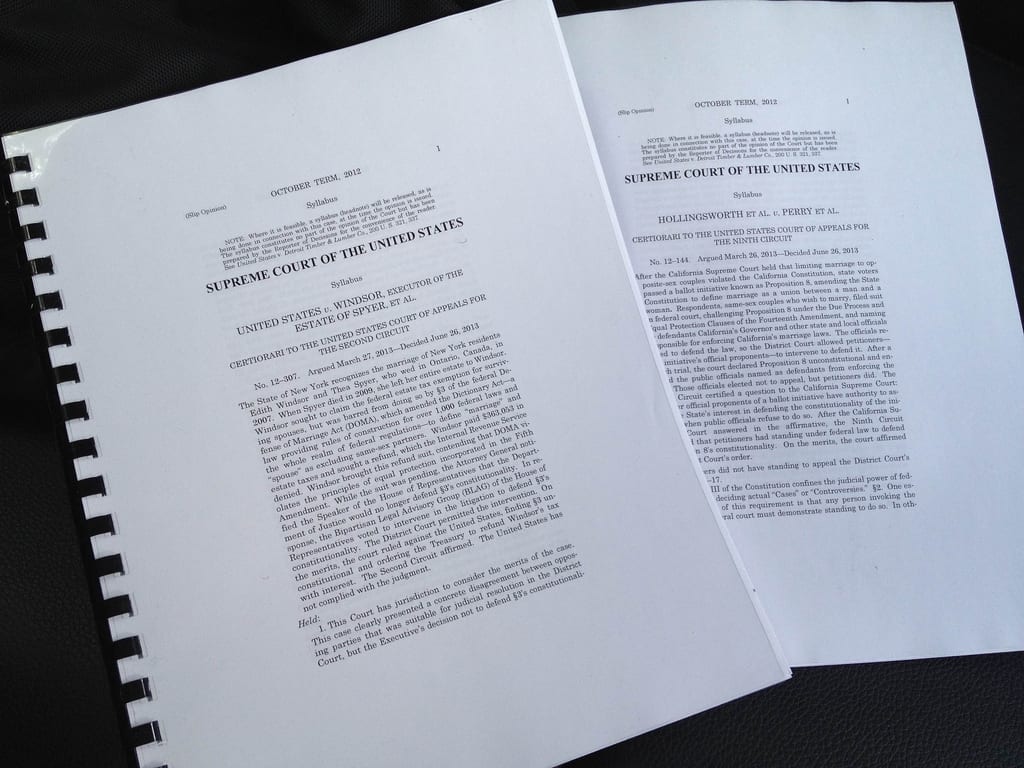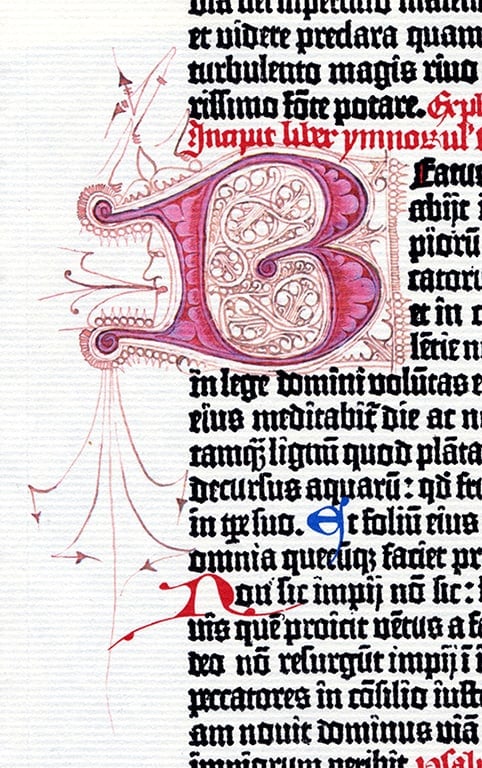Well, it’s that time of year again, when the Supreme Court goes all Hollywood on us and unleashes a slew of summer blockbusters. Voting rights, affirmative action, criminal law, and, of course, the Tom Cruise/Will Smith-sized cases on gay marriage. The decisions are less than a week old and already there has been a lot of ink spilled and pixels, umm, pixilated? on the decisions. Here at TJP we know that it can be almost too much to take in. Which is why we’ve put together a sampling of the best of what is out there on the decisions – we hope that these resources can be the 3D glasses we all sometimes need to make the unfocused picture of ill-tempered rhetoric snap into clarity.
First: what happened? Well, the best place to start is the actual opinions released by the Court: United States v Windsor (No. 12-307) and Hollingsworth v Perry (No. 12-144). If those are too much, check out the always-invaluable SCOTUSblog for it’s amazing “Plain English” summary of the cases. I highly recommend it.
Of course, what the court said is only the start of the conversation. The last few days have seen lots of commentary. The United States Bishops’ Conference released a statement reaffirming traditional Church teaching. And, over at Patheos’ Catholic portal, regular contributor The Deacon’s Bench links to a collection of statements from other churches and religious communities.
Numerous other public figures also weighed in. Online magazine “The Blaze” has one of the most comprehensive collections of statements.
Information collected, the second question is: what happens now? Most immediately, Edie Windsor gets a tax refund. Past that, though, there are changes coming. At the federal level, whole swathes of regulations need to be re-written.1 Dylan Matthews of the Washington Post has a good round-up of some of the major changes and Business Insider likewise has a list of 22 major changes in the lives of gay couples. Some of these are immediate, like the non-native same-sex partners of US citizens who suddenly found their deportations stopped.2
California lay at the crossroads of much of the SCOTUS rulings, and despite some initial debates about the scope of the ruling (the Court did not rule Proposition 8 unconstitutional, though the lower courts had), the state has already begun performing same sex marriages. (The dedicated and interested can also read Governor Brown’s statement on the issuing of marriage licenses and California Attorney General Kamala Harris’s memorandum as well.)
***
Now the kicker: what does this mean? With the basics of events and timeline covered deeper analysis has begun. Here are five good places to go to check out the consequences:
-
Online magazine Slate runs an annual “Supreme Court Breakfast Table” 3 that has very good coverage, and not only the marriage decisions. I’d say start here and work your way through.
-
Legal commentator Jeffrey Rosen and former federal judge Michael McConnell have an excellent dialogue up at The New Republic.
-
Yale law professor Jack Balkin has one of the most interesting takes on Windsor in which he reads it as a long jurisprudence against “class legislation” – a legal tradition that had been thought superseded in latter part of the 20th century, but that might be the best way to describe the Court’s position on gay rights today.
-
If you want to move past the legal commentary, it’s worth trying Robert George, Sherif Grigis, and Ryan T. Anderson, who wrote this essay detailing a way forward for those who support traditional understandings of marriage.
-
Meanwhile, supporters of same-sex marriage are taking the opportunity to celebrate their relationships and their ongoing entry into the American mainstream.
So, then, that’s where things stand. As our editors wrote here at The Jesuit Post, this decision leaves women and men of faith, not for the first time, in a place of tension. Other religious thinkers have also chimed in: in the best tradition of Catholic thought, the blog “Catholic Moral Theology” has posted two incredible pieces to help navigate this tension. In the first Dana Dillon writes on how Catholics and other people of faith can speak to each other about same-sex marriage after the decisions. And in the second Thomas Bushlack offers what he calls a “personal, pastoral reflection.”
The beginning of dialogue is listening. In this case that means being aware of what what’s being said. It’s not until that has been done that we can even begin the second step of trying to understand what’s been said on its own terms. It’s only then that a good dialogue responds with love, integrity, and truth.
Wherever you find yourself on this issue, the above resources will provide a solid ground from which we can continue that search together.
— — // — —
- In his opinion for the Court in Windsor, Justice Kennedy stated that there were over 1,000 federal statutes or regulations involving marriage. Slip Op. at 2. ↩
- An interesting aside – the fact that the immigration status of same-sex couples is no longer an issue may have removed one obstacle to comprehensive immigration reform. ↩
- This year’s contributors were Slate’s Emily Bazelon, federal judge Richard Posner, former Solicitor General of the United States Walter Dellinger, and Professor Eric Posner of the University of Chicago law school… yes, Judge Posner’s son. ↩



